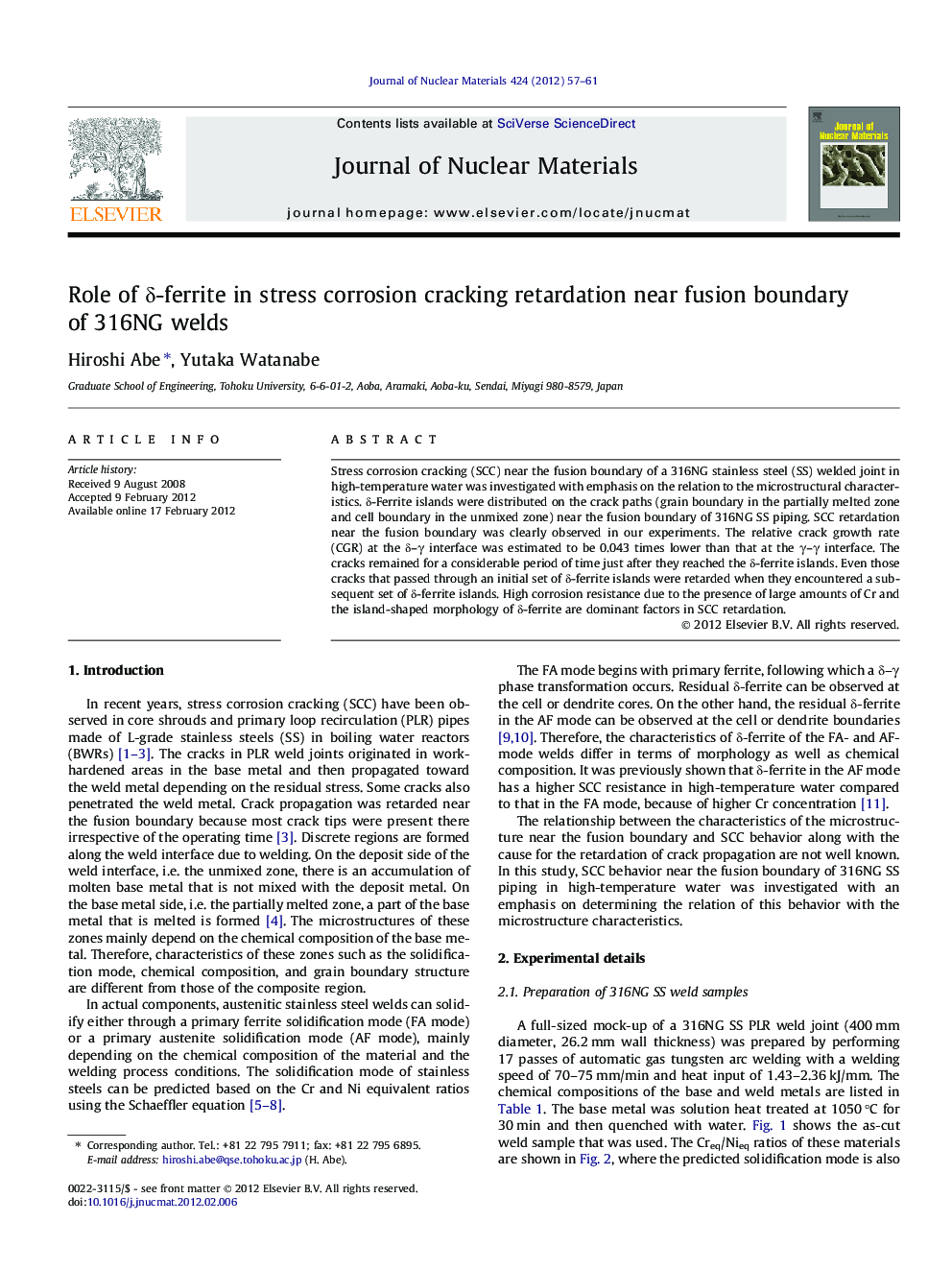| Article ID | Journal | Published Year | Pages | File Type |
|---|---|---|---|---|
| 1566165 | Journal of Nuclear Materials | 2012 | 5 Pages |
Abstract
Stress corrosion cracking (SCC) near the fusion boundary of a 316NG stainless steel (SS) welded joint in high-temperature water was investigated with emphasis on the relation to the microstructural characteristics. δ-Ferrite islands were distributed on the crack paths (grain boundary in the partially melted zone and cell boundary in the unmixed zone) near the fusion boundary of 316NG SS piping. SCC retardation near the fusion boundary was clearly observed in our experiments. The relative crack growth rate (CGR) at the δ-γ interface was estimated to be 0.043 times lower than that at the γ-γ interface. The cracks remained for a considerable period of time just after they reached the δ-ferrite islands. Even those cracks that passed through an initial set of δ-ferrite islands were retarded when they encountered a subsequent set of δ-ferrite islands. High corrosion resistance due to the presence of large amounts of Cr and the island-shaped morphology of δ-ferrite are dominant factors in SCC retardation.
Related Topics
Physical Sciences and Engineering
Energy
Nuclear Energy and Engineering
Authors
Hiroshi Abe, Yutaka Watanabe,
